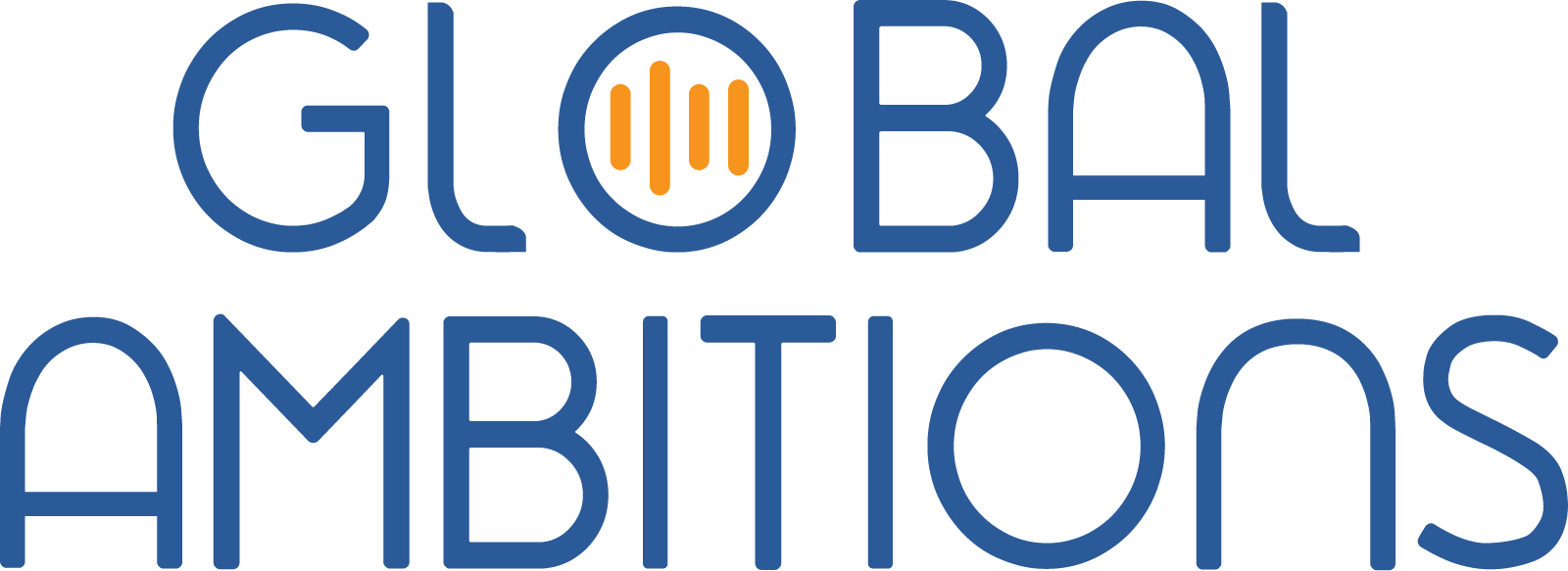With Soeren Eberhardt, Global Site Manager at Microsoft
Below is a full transcript of this episode
Antoine Rey
Hi, I’m Antoine Rey and I will be your host today for this Global Ambitions podcast episode. And today my guest is Soeren Eberhardt, and Soeren is a Global Site Manager at Microsoft in Seattle. And today we’ll be talking about Microsoft’s 365 local adaptation. Soeren, welcome to the program.
Soeren Eberhardt
Thank you for having me.
Antoine Rey
Can you share with our audience what is being done by Microsoft 365 beyond just localization of content to reach and convert more Microsoft users into regular buyers?
Soeren Eberhardt
So yeah, as you said, we want to make visitors to our Microsoft 365 pre-sales pages, people who actually buy and don’t just visit. So we need local marketing appeal. And for that, well, the first step is always having things in the local language. We all know that. That’s why we have the language industry.
But the second step is actually also to adapt certain pieces of the pages. Looking at maybe there’s market-specific messaging that we can use, maybe there’s even market-specific imagery. There’s things that certain markets prefer, for example, contacting pre-sales support on the phone. So is that something that we want to highlight for specific markets as opposed to other markets? So it’s really looking at where can we do what we call marketizations, where can we optimize individually for certain markets.
Antoine Rey
So and you’re doing this across the range of products that are available on MS 365 like so from all the office suite as well as other products, I guess, right?
Soeren Eberhardt
So we have a specific set of products.
Antoine Rey
Okay.
Soeren Eberhardt
So what I was working on, what I’ve been working on mostly, is Microsoft 365, the different business uses. We also have consumer SKUs and then the enterprise SKUs. So it’s a pretty broad range of products. But I’ve been working on a specific set to really focus our efforts there.
Antoine Rey
And when you’re saying then you’re looking at adaptation of content, whether that’s like graphics, like images or colors or as well as content, I presume you are completely transcreating there, or however we define Transcreation.
Soeren Eberhardt
So I wouldn’t say… well, actually, for the content on the textual side, yes, we do transcreation and we do that instead of mere translation. We have, of course, certain limits set by the overall branding of Microsoft. Yes, I would have liked to test out, for example, like a very Japan-specific page. We know that Japanese web pages are lot denser in terms of information than the ones we create in the West. We haven’t gone that far, but especially on the on the content side…
So one example that I can can give is, for example, that for an Australian user, GDPR, the European privacy rules are not really that relevant for a lot of European small businesses that are buying our products. It’s a really relevant question. And we know that for specific markets within Europe, Germany and France, it’s even more important. So we tested that we had A/B tests where we looked at do people engage with that content and also does it change their purchase behavior? And we could see that if we have specific messaging around GDPR in Germany and France, that yes, people feel more that they can trust our products to help them with GDPR regulations.
Antoine Rey
And when you’re doing A/B testing, this is like, are you tracking the results of that and changing things accordingly there? How does that work? How do you track and measure the success of that?
Soeren Eberhardt
Yes. And since probably not everyone listening to the podcast is familiar with AB testing, it’s gotten more common. It’s gotten much easier because we have tools that are easier to use for that. But just the general concept is that you present a changed variant of what you have regularly to a certain set of users. So for an AB test, you would basically go 50 over 50. So 50% of your users see the experience that you’ve had and 50% see a changed variant of that page and you shouldn’t make too many changes because then you don’t really know what is it that actually changed behavior.
So you have a hypothesis and you basically have a key metric or a set of metrics that you want to measure. You want to see what is that AB test really doing right? When you change for example as we’ve done like a header on a page, what does that impact? So since on our pages, we really want people to buy and try our products that are easy metrics for us. Of course, you can also have an AB test where you just check do people engage more with the with a given page or even just with a link? And that’s something that you basically need to have in advance and you need to be able to pull those data.
And so my team has had a really successful AB testing program for a few years now and we’ve been running a lot of local tests. Sometimes we find out that something that works in just one market that we can actually extend that and we can even say, Hey, maybe that’s a good idea for the global treatment of the page. Sometimes it’s very market specific; sometimes it’s specific for a set of markets.
We know that emerging markets might behave in a similar way. We’ve often looked at Mexico and Brazil together as Latin American emerging markets, and we could say, hey, maybe we just use a specific treatment in those markets. So we would have like a regional treatment and yeah, the A/B testing really gives you lots of great insights and where you can make those tweaks.
And if they are not successful, people sometimes say like, oh, your test failed. No, the test didn’t fail. We learned something from it. Right? We learned that, yeah, we thought all this would be successful, but it wasn’t. Actually, people buy less when we have this specific message on the page. Well, good learning, so don’t put that message on your page ever.
Antoine Rey
Interesting. And so like when you have the results of those AB testing as an organization, I’m trying to understand and I’m fascinated by the fact that localization then this is still a localization sort of a job, right? But you influence, you work with product, with sales, with marketing, then to say, Hey, we’ve tested this. This is the result that we’ve got. Here is the data. You know, now make the change, let’s make the changes because that’s going to drive more adoption. So you’re really influencing sales and marketing decisions in that case.
Soren Eberhardt
Yes. So we definitely have a little leeway for our international pages. So it’s not that we always need the permission to make a change on a page, but yes, we coordinated strongly with the site management team that is designing foremost for the US, but then obviously kind of the framework then works for the rest of the world. And yes, also with the people on the business side, we’ll say, Hey, you should go with that strategy.
Antoine Rey
And do you also measure the impact of the changes that you’re making mainly on the tech side and some of the structural side from an SEO perspective?
Soeren Eberhardt
So yeah, for SEO, it’s really hard to do any testing. Obviously, you also need to have the data, right? You need to see how much does your work impact visits. But that is not my area of expertise. So and I’ve seen that you’ve had people talk about SEO that can do that much more informed than I can.
Antoine Rey
Yeah, but certainly some of the work that you’re doing in terms of adaptation and even changing titles and positioning them in different places will have an impact and backlinks and things like that will have an impact on the side of things.
Soeren Eberhardt
Yes. And you need to keep that in mind all the time. Yes.
Antoine Rey
Yeah. Right.
Soeren Eberhardt
Very good point that the textual changes. Yeah. You cannot just do them haphazard without thinking about SEO.
Antoine Rey
And so how do you ensure, how do you know when you’re making all those changes and I presume you’re working across a large set of languages, how many languages do you work across?
Soeren Eberhardt
We have 39 languages, but we have a few top tier markets where we focus our efforts. So that makes things a little easier in terms of managing that. As said, while we also have we should distinguish between languages and markets, we might have market specific pages, for example, for Argentina, so people see things in their local currency. But of course, we use the same Spanish translations that we use for for other Latin American countries. And so we have yeah, we have this differentiation between markets and locales.
Antoine Rey
But so with that many locales there and markets there, what’s the geopolitical awareness of the team? How do you ensure you don’t offend local communities? Or how does that work?
Soeren Eberhardt
Yeah, that is a very tricky one to be culturally aware and make sure. I would say that Microsoft overall has a really good systemic knowledge that, yeah, you should make sure that things are suitable for global markets from the get go, but there’s always those things that slip through. The strength of the team that I’m working in is that we have people in local markets. So it’s been easy to run certain like new campaigns, completely newly designed pages by some of our local what we call in market PMs. And they could give feedback for some of those top tier markets and yeah, things, things happen where like you have to be careful with the use of tattoos in Japan. An image slip through and our Japanese in market team caught that in time and we could change it.
So yeah it’s not that we have people that know for every single market on the planet what might be offensive. But we have good general guidelines and I think that is what you need to have in place, right? You need to have a little bit of a of a review system in place, but you also need to have those general guidelines basically identifying where should you be careful.
If you really don’t have to, don’t put flags or maps in your images, things like that, because those can be super sensitive. And then you really need to vet in detail what can you show where? And then you might have a market like Morocco or Argentina where there’s territorial disputes with other countries, right? And um, then you really have to go into that level of detail. So just knowing in general what is something that might be tricky, do you really need to use that to illustrate your products and to entice people to buy something?
Antoine Rey
Not an easy thing to navigate across 39 languages probably, and more markets behind that there. Um, and like so overall, over the last number of years where you’ve been doing this, I presume you’ve gathered a lot of metrics, you’ve learned a lot of things along the way, sometimes got it wrong, sometimes got it right. And but every time learn something along the way. Do you track and measure data? Do you have some sort of a dashboard that you use to show adoption, to show progress in a given country based on the work that your team is doing?
Soeren Eberhardt
Yes. And in a way. So I moved into marketing localization a little bit over four years ago. I’ve been doing localization for over 25 years, but was mostly involved on the software side. And it was in a way it was very refreshing for me to suddenly have all these very strong metrics. When you’re working on software, yes, you can track usage. A lot of things that when I started my career, we didn’t even know how many people would use one language version. Now there’s a lot better metrics in place, but when you’re working in marketing, you can you can look at sales while we’re looking at purchases and also trials and then how many trials convert.
That is something that’s very strong metrics. And when you slice and dice those by markets, we can very easily see the so-called funnel, right? How many visitors come to the page and then how many people buy, how many people click on that buy button, but then also how many people actually go to the through the whole purchase process and how many people end up with our product. That’s normally not where it stops. We also look at how many people drop after a while, how many people use our products.
But I would say that just having those really, really strong metrics of sales is something that helps us to stay very focused because we know their numbers attached to our work and we can obviously also show very well like with AB tests. Yeah, we deviate from that English header on one of our main pages, but we can prove like, oh, that brings us that much more money. And that is always a convincing argument, right?
When you talk to marketing people, when you talk to the business side of the house, they will not ignore localization any longer when it brings them clear numbers in sales. And that’s the beauty of nowadays having access to all that information that we didn’t have when we had a stack of CDs to install and T4 or something like that. I remember at the time. So.
Antoine Rey
Okay, exactly. Well, Soren, thank you very much. We’ve come to the end of this episode. Thanks very much for your participation today. I think this is very interesting topic to look at the local adaptation of product on a very large scale and on a wide breadth of languages as well. So thanks very much.
Soeren Eberhardt
Thank you for having me. It’s been a pleasure.





